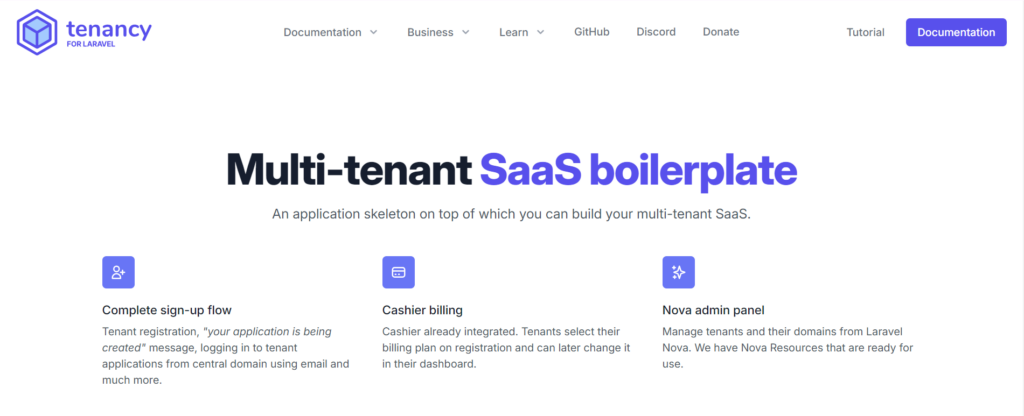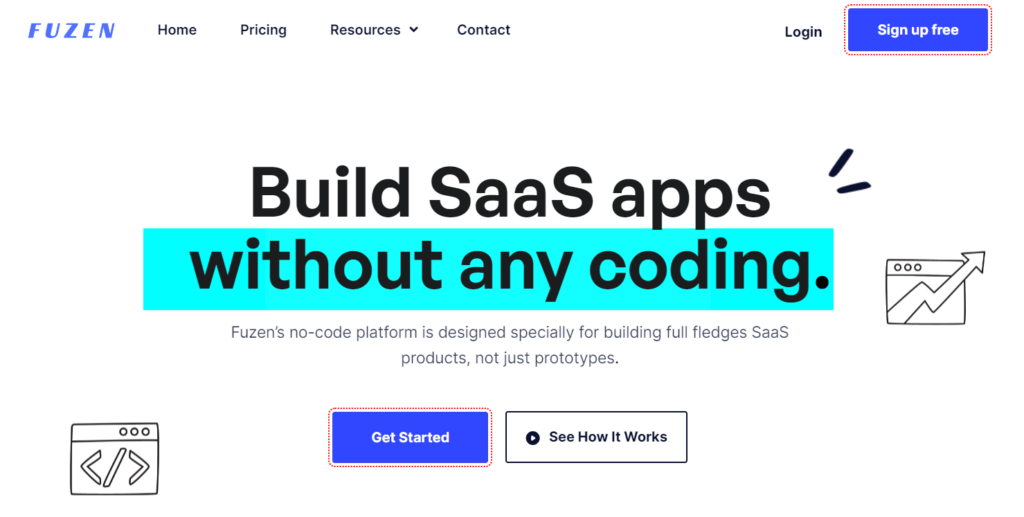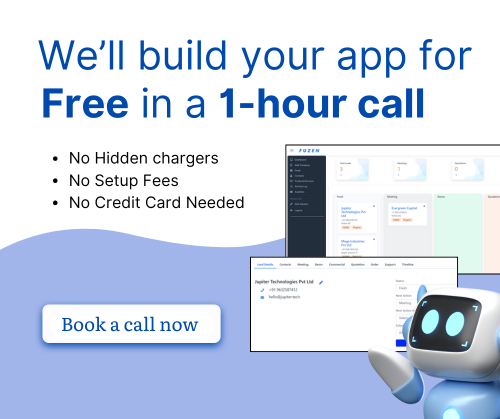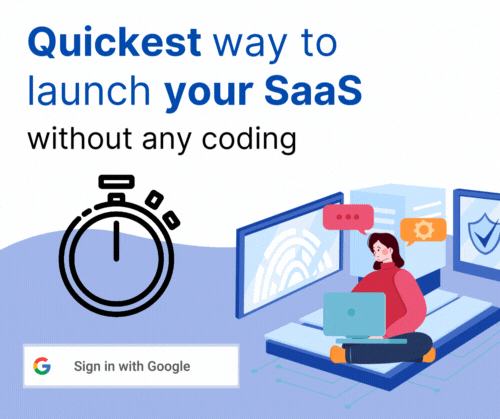Launching a SaaS product demands agility, efficiency, and innovation. To meet these demands, developers often turn to SaaS boilerplates, which provide a solid foundation with essential features pre-built, enabling rapid development and deployment.
In this post, we will delve into everything you need to know about SaaS boilerplates and also explore an alternative for no-techies.
Understanding SaaS Boilerplates
SaaS boilerplates, often referred to as starter kits or templates, are pre-built, customizable software frameworks designed to expedite the development of SaaS applications. These boilerplates typically include essential features and functionalities common to most SaaS products, such as user authentication, subscription management, billing integration, and data storage.
Advantages of SaaS boilerplate
- Time-saving: Boilerplates typically come with pre-built components, features, and architecture, saving developers significant time in setting up the basic structure of the application.
- Consistency: By using a boilerplate, developers can ensure consistency across projects in terms of architecture, coding standards, and best practices.
- Reduced development cost: Since boilerplates provide a foundation for the application, developers can focus more on building unique features rather than reinventing the wheel, leading to cost savings.
- Scalability: Many boilerplates are designed with scalability in mind, making it easier to handle growth and increasing demands as the SaaS application gains users.
- Community support: Popular boilerplates often have a large community of users and contributors, providing access to resources, tutorials, and support forums that can be helpful during development.
Disadvantages of SaaS boilerplate
- Learning curve: Depending on the complexity of the boilerplate, developers may need to spend time learning its structure, configuration, and customization options before they can effectively use it.
- Bloat: Some boilerplates may come with features and components that are not needed for a particular project, leading to unnecessary complexity and potentially impacting performance.
- Dependency on maintainers: If the maintainers of the boilerplate stop updating or supporting it, developers may encounter issues with compatibility, security vulnerabilities, or future updates to underlying technologies.
- Customization limitations: While boilerplates provide a good starting point, they may not perfectly fit the requirements of every project. Developers may need to spend additional time customizing and extending the boilerplate to meet specific needs, potentially negating some of the time-saving benefits.
- Over-reliance: Over-reliance on boilerplates without a thorough understanding of underlying concepts and technologies can hinder developers' ability to troubleshoot issues or make necessary modifications in the future
Top 5 SaaS Boilerplates
1. Jumpstart - Rails SaaS Boilerplate
Built on the robust Ruby on Rails framework, this boilerplate offers a solid foundation for building scalable and feature-rich SaaS applications. With built-in authentication, subscription management, and payment processing, it's a favorite among Rails enthusiasts.
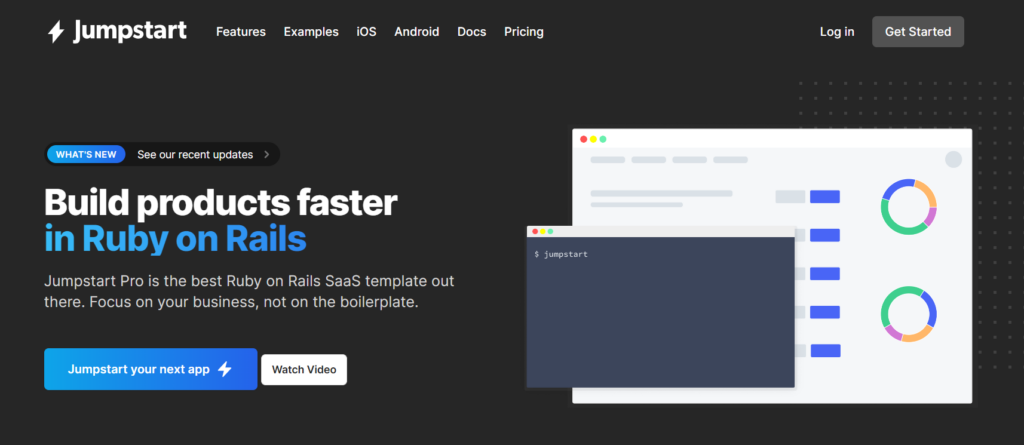
Pros
- Robust Framework: Built on Ruby on Rails, known for its stability, scalability, and extensive library of gems.
- Community Support: Rails has a large and active community, making it easier to find resources, tutorials, and plugins.
- Convention over Configuration: Rails follows the principle of convention over configuration, reducing the need for manual setup and configuration.
- Rich Ecosystem: Rails comes with a rich ecosystem of tools and libraries, enabling rapid development.
Cons
- Learning Curve: Ruby on Rails may have a steeper learning curve for beginners compared to other frameworks.
- Performance: While Rails is powerful, it may not be the best choice for high-performance, real-time applications.
- Monolithic Architecture: Rails tends to favor monolithic architecture, which may not be suitable for all types of applications, especially microservices-based architectures.
2. Gravity - MEAN Stack SaaS Boilerplate
Leveraging the power of Node.js, this boilerplate provides a comprehensive solution for developers looking to build modern and dynamic SaaS applications. It's perfect for teams that favor JavaScript-based technologies.
Pros
- JavaScript Full Stack: Leveraging Node.js allows for a consistent JavaScript-based development experience.
- Real-Time Capabilities: Node.js enables real-time communication and event-driven architecture, suitable for applications requiring real-time updates.
- Scalability: MEAN stack applications can be easily scaled horizontally, making them suitable for handling large volumes of traffic.
- Flexibility: Each component of the MEAN stack can be replaced or extended with other technologies, providing flexibility in development.
Cons
- Complexity: Managing the intricacies of four different technologies simultaneously can be challenging, especially for novice developers.
- Maturity: While each component of the MEAN stack is powerful, the ecosystem may not be as mature as some other frameworks.
- SEO Limitations: Single-page applications built with the MEAN stack may face challenges with search engine optimization (SEO) compared to server-rendered pages.
3. SaaS Pegasus - Django SaaS Boilerplate
Django aficionados rejoice! This boilerplate simplifies the process of building SaaS applications with Django, offering a wealth of features including user management, subscription billing, and RESTful API support. Get ready to unleash your Django powers.
Pros
- High-Level Framework: Django provides high-level abstractions and built-in features, reducing the need for boilerplate code.
- ORM Support: Django's ORM (Object-Relational Mapping) simplifies database interactions, enhancing developer productivity.
- Scalability: Django applications can be scaled horizontally and vertically, making them suitable for handling large user bases.
- Security: Django includes built-in security features, such as protection against common vulnerabilities like SQL injection and cross-site scripting (XSS).
Cons
- Tightly Coupled Components: Django's components are tightly coupled, which may limit flexibility in certain scenarios.
- Learning Curve: Django's extensive features and conventions may pose a steep learning curve for beginners.
- Performance: While Django is performant, it may not be as lightweight as some other frameworks, especially for microservices architectures.
4. Tenancy - Laravel SaaS Boilerplate
Laravel has emerged as a powerhouse in the PHP ecosystem, and this boilerplate is a testament to its versatility and flexibility. With its elegant syntax and extensive ecosystem, Laravel makes building SaaS applications a breeze, allowing you to focus on innovation rather than boilerplate code.
Pros
- Expressive Syntax: Laravel offers an elegant and expressive syntax, making it easy to write clean and readable code.
- Modular Architecture: Laravel's modular architecture allows developers to organize code effectively and promote code reusability.
- Community Support: Laravel has a vibrant community, providing ample resources, packages, and tutorials for developers.
- Laravel Ecosystem: Laravel comes with a rich ecosystem of tools, libraries, and extensions, streamlining development.
Cons
- Documentation Quality: While Laravel's documentation is comprehensive, it may not always be as up-to-date or detailed as desired.
- Performance Overhead: Laravel's expressive syntax and extensive features may introduce some performance overhead compared to more lightweight frameworks.
- Learning Curve: Laravel's feature-rich nature may present a learning curve for beginners, especially those new to PHP frameworks.
5. Serverless SaaS Boilerplate
Embrace the serverless revolution with this innovative boilerplate built on AWS Lambda, API Gateway, and other serverless technologies. Say goodbye to infrastructure management and hello to scalable, cost-effective SaaS solutions that can handle anything the cloud throws your way.
Pros
- Scalability: Serverless architectures automatically scale based on demand, making them highly scalable and cost-effective.
- Reduced Operational Overhead: With serverless, developers can focus on writing code without worrying about server provisioning, scaling, or maintenance.
- Cost Efficiency: Serverless architectures typically follow a pay-as-you-go model, reducing infrastructure costs for applications with fluctuating usage patterns.
- Event-Driven: Serverless architectures are inherently event-driven, making them suitable for event-based applications and workflows.
Cons
- Cold Start Issues: Serverless functions may experience cold start latency, especially for infrequently accessed functions, impacting response times.
- Vendor Lock-In: Adopting serverless architectures may lock you into a specific cloud provider's ecosystem, limiting flexibility and portability.
- Debugging Complexity: Debugging and monitoring serverless applications can be more challenging compared to traditional server-based architectures.
- Limited Runtime Environment: Serverless functions have limitations on runtime environments and execution time, which may impact the types of applications that can be built.
Things to Consider When Choosing a SaaS Boilerplate
When venturing into the realm of SaaS development, selecting the right boilerplate can make all the difference. Here are a few key factors to keep in mind before taking the plunge:
Tech compatibility
Ensure that the boilerplate you choose aligns with your tech stack and development preferences. Whether you're a fan of Node.js, Python, or Ruby on Rails, there's a boilerplate out there waiting to be your perfect match.
Budget
While boilerplates can be a cost-effective solution, it's essential to consider any associated costs, such as hosting fees or premium features. Opt for a boilerplate that fits within your budget constraints without compromising on quality or functionality.
Community support
Check the level of community support and documentation available for your chosen boilerplate. A vibrant community can be invaluable when troubleshooting issues or seeking advice on customization and best practices.
Scalability
Look for a boilerplate that can grow alongside your business. Scalability features such as modular architecture and support for microservices can future-proof your application and save you headaches down the line.
Security
Protecting your users' data should always be a top priority. Choose a boilerplate that prioritizes security features such as encryption, secure authentication mechanisms, and regular updates to address any vulnerabilities.
No Code Software - Saas boilerplate alternative for non-techies
No-code platforms serve as an excellent alternative to SaaS boilerplates for non-tech individuals due to their unparalleled accessibility and simplicity.
Unlike SaaS boilerplates, which still demand a certain level of technical proficiency to customize effectively, no-code platforms provide an intuitive interface that requires zero coding skills. By leveraging drag-and-drop functionalities and pre-built components, these platforms enable users to craft sophisticated SaaS applications swiftly and effortlessly.
This not only accelerates the creation process but also ensures a higher standard of quality, as users can focus their efforts on refining their ideas and business objectives rather than grappling with technical complexities.
Kickstart Your SaaS Product with Fuzen
Introducing Fuzen - Designed with simplicity and efficiency in mind, Fuzen eliminates the need for coding skills, allowing anyone with a vision to create high-quality SaaS products in a fraction of the time.
Here's why Fuzen is the ultimate no-code platform for SaaS enthusiasts;
Dedicated to SaaS
Unlike generic no-code platforms, Fuzen is laser-focused on SaaS development. This means you get access to a treasure trove of features and functionalities tailored specifically for building top-notch SaaS products.
Preconfigured Templates
Fuzen offers a library of preconfigured templates for full-fledged SaaS applications. Whether you're dreaming of a CRM, project management tool, expense tracker, or marketing automation platform, Fuzen has got you covered.
Scalability
With Fuzen, scaling your SaaS products is a breeze. Whether you're catering to a handful of users or serving a global audience, Fuzen's infrastructure can handle it all, ensuring a seamless experience for your customers.
Highly Customizable
You can customize every aspect of your SaaS application to match your unique branding and business requirements, without ever touching a single line of code.
Conclusion
While SaaS boilerplates offer undeniable advantages in terms of time efficiency and scalability, they are primarily tailored for developers and technical teams.
For non-technical individuals or businesses seeking a more accessible and cost-effective approach to SaaS development, the emergence of no-code platforms presents a compelling alternative.
You can try Fuzen for free if you looking for a solution.



